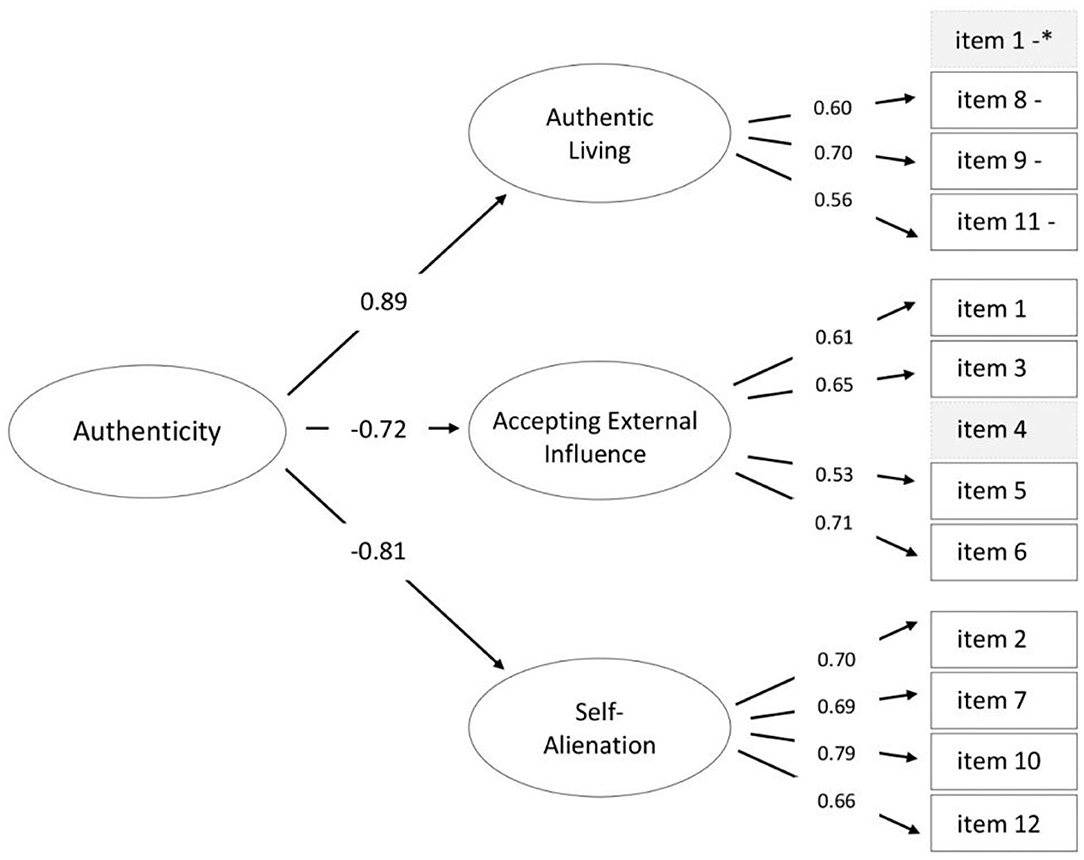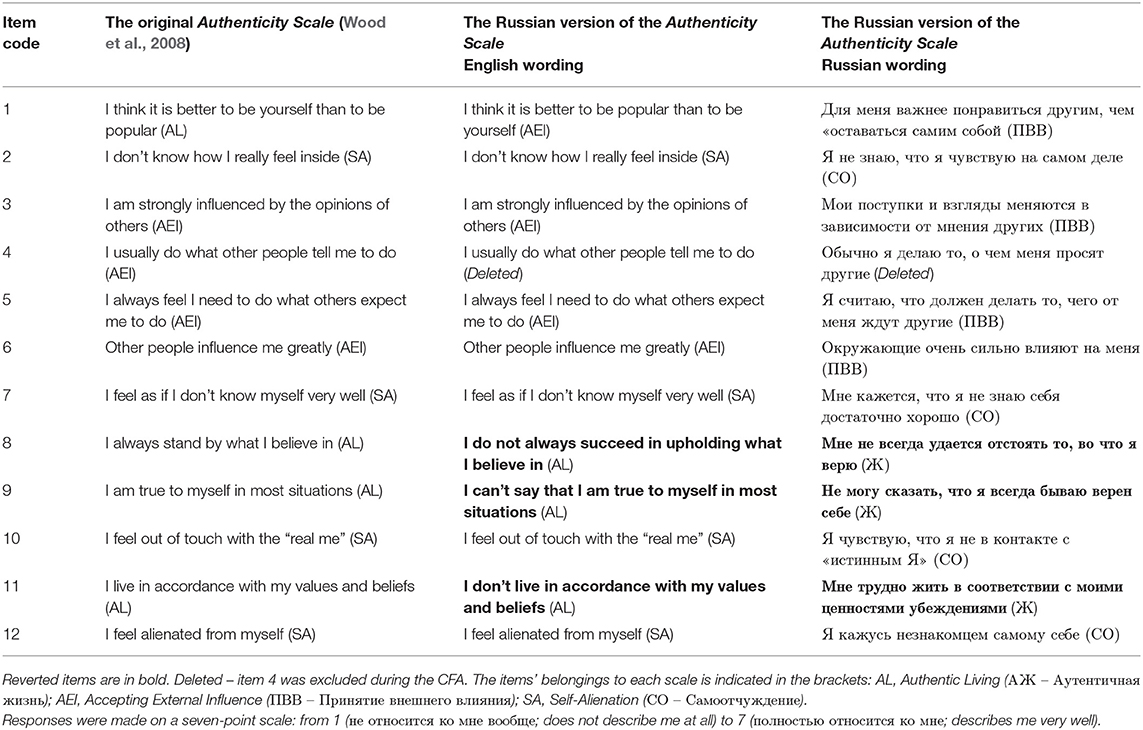- 1School of Psychology, National Research University Higher School of Economics, Moscow, Russia
- 2College of Medicine, Biological Sciences and Psychology, University of Leicester, Leicester, United Kingdom
A Corrigendum on
The Authenticity Scale: Validation in Russian Culture
by Nartova-Bochaver, S., Reznichenko, S., and Maltby, J. (2021). Front. Psychol. 11:609617. doi: 10.3389/fpsyg.2020.609617
In the original article, there was a mistake in Figure 3 “The optimal CFA model tested for the Authenticity Scale compared with the original model (Wood et al., 2008).” as published. Near the item 1, which is included in Acceptance External Influence subscale, the sign “–” was mistakenly put. It should be removed. The corrected Figure 3 “The optimal CFA model tested for the Authenticity Scale compared with the original model (Wood et al., 2008)” appears below.

Figure 3. The optimal CFA model tested for the Authenticity Scale compared with the original model (Wood et al., 2008). Blocks dotted gray indicate excluded items. * – item one was included in Accepting External Influence. “–” indicates negatively phrased items. Error variances omitted for clarity.
In the original article, there was also a mistake in the Appendix table “The Authenticity Scale: Original, Russian, and Corresponding English Versions” as published. The text of Item 1 (both English and Russian Wording) was incorrectly highlighted in bold. The text should be in normal (regular) style. The corrected Appendix table “The Authenticity Scale: Original, Russian, and Corresponding English Versions” appears below.
The authors apologize for these errors and state that they do not change the scientific conclusions of the article in any way. The original article has been updated.
Appendix
The Authenticity Scale: Original, Russian, and corresponding English versions.
Инструкция:
Пожалуйста, прочтите список приведенных утверждений и оцените их с точки зрения того, насколько они характеризуют Ваши привычки и поведение. Поставьте галочку в ячейке под тем ответом, который подходит Вам.
Instruction:
Please read the list of statements provided and rate them in terms of how they characterize your habits and behavior. Please tick the answer that best describes you.
References
Wood, A. M., Linley, P. A., Maltby, J., Baliousis, M., and Joseph, S. (2008). The authentic personality: a theoretical and empirical conceptualization and the development of the authenticity scale. J. Counsel. Psychol. 55, 385–399. doi: 10.1037/0022-0167.55.3.385
Appendix
Keywords: Authenticity Scale, wellbeing, validation, reliability, Russian culture
Citation: Nartova-Bochaver S, Reznichenko S and Maltby J (2021) Corrigendum: The Authenticity Scale: Validation in Russian Culture. Front. Psychol. 12:675919. doi: 10.3389/fpsyg.2021.675919
Received: 04 March 2021; Accepted: 19 March 2021;
Published: 20 April 2021.
Edited and reviewed by: Sai-fu Fung, City University of Hong Kong, Hong Kong
Copyright © 2021 Nartova-Bochaver, Reznichenko and Maltby. This is an open-access article distributed under the terms of the Creative Commons Attribution License (CC BY). The use, distribution or reproduction in other forums is permitted, provided the original author(s) and the copyright owner(s) are credited and that the original publication in this journal is cited, in accordance with accepted academic practice. No use, distribution or reproduction is permitted which does not comply with these terms.
*Correspondence: Sofya Nartova-Bochaver, cy1uYXJ0b3ZhQHlhbmRleC5ydQ==; c25hcnRvdmFib2NoYXZlckBoc2UucnU=
 Sofya Nartova-Bochaver
Sofya Nartova-Bochaver Sofia Reznichenko
Sofia Reznichenko John Maltby
John Maltby